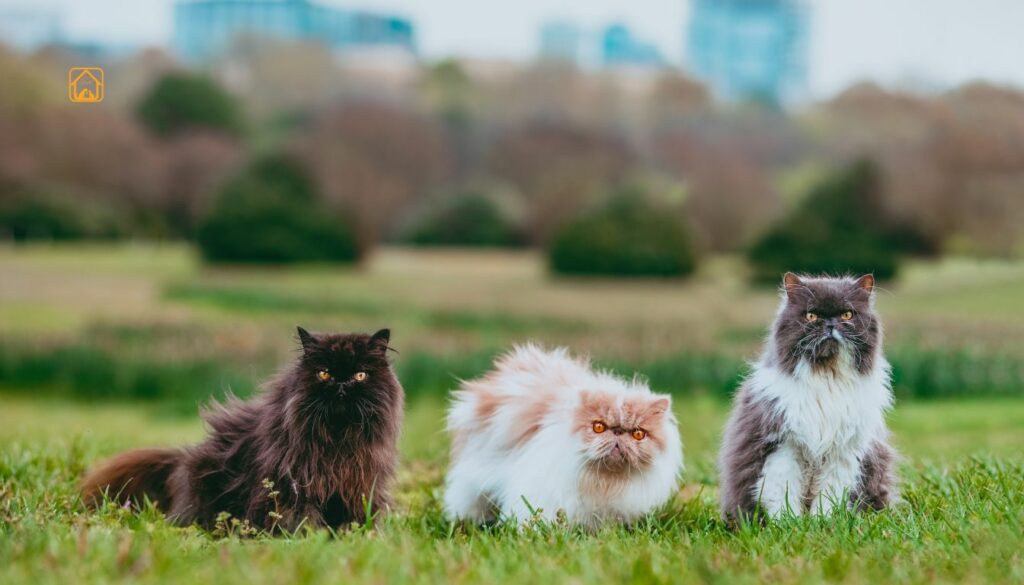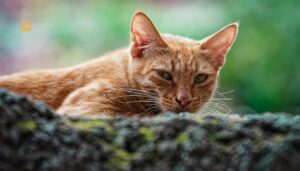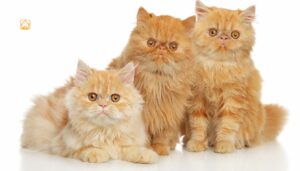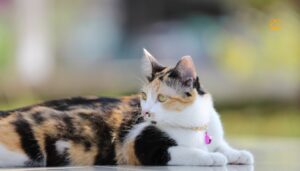Overview of Persian Cat Coat Types and Length
Generally most Persians have a classic longhaired coat, but even within that, there are variations in texture and fullness. Some are plush and dense, while others feel lighter or even a bit woolly.
Persian Cat Coat Type and Length Explained
- Coat Type: Persian cats have a double coat, a soft, dense undercoat and a longer, straight outer layer. This gives them their signature fluffy look.
- Coat Length: Their hair can grow several inches long. It’s not unusual for their fur to form elegant ruffs around the neck and feathery tufts on their tails and paws.
Some Persians are even fluffier than others, with their coat type and length shaped by breeding and genetics. Their luxurious coat is a big part of the Persian’s magic, and responsibility.
Persian Cat Color Overview & Classification
Persian cat colors aren’t just about looks, they’re a blend of history, genetics, and breed standards. The Cat Fanciers’ Association (CFA) and The International Cat Association (TICA) recognize over 100 combinations of Persian cat coat colors and patterns. But to make things simpler, major organizations group these colors into seven main divisions:
- Solid Colors
- Silver & Golden
- Smoke & Shaded
- Tabby
- Particolor (Tortoiseshell, Blue-cream, etc.)
- Bicolor
- Himalayan (Pointed)
Each group includes several shades, from the classic white Persian cat to rare chinchilla goldens. Honestly, it’s like visiting a feline rainbow.
Persian cat color chart
| Color Name | Description | Eye Color |
| White | Pure, snowy white fur | Blue, copper, or odd-eyed |
| Black | Deep black to brownish-black | Copper/gold |
| Blue (Gray) | Solid slate to pale gray | Copper, orange |
| Red (Orange) | Rich orange or apricot | Copper, gold |
| Cream | Pale, off-white to light orange | Copper, green |
| Chocolate | Warm, medium to dark brown | Copper |
| Lilac | Soft, lavender-gray | Copper |
| Chinchilla | White with black or silver hair tips | Green, blue-green |
| Smoke | Pale undercoat with dark tips | Copper, orange |
| Tabby | Striped, spotted, or ticked pattern | Copper, green |
| Calico | White with orange and black patches | Copper, gold |
| Tortoiseshell | Black with orange and cream spots | Copper, gold |
| Pointed | Pale body, dark face/ears/paws/tail | Blue |
There are dozens of official and unofficial Persian cat coat colors, but these are the most popular and recognized worldwide.
Popular Persian Cat Colors Explained (White, Black, Gray, Orange, More)
Let’s take a closer look at the most sought-after Persian cat coat colors. Each color brings its own personality and myth, some are even tied to pop culture!
White Persian Cat
Pure white Persians often have stunning blue, copper, or even odd-colored eyes (one blue, one copper!). They’re the classic “Fancy Feast” cat and a favorite for their elegant, regal look.
Black Persian Cat
Black Persians are striking, with deep, glossy coats and copper eyes. Fun fact: in sunlight, their fur can show a warm brownish tinge.
Gray (Blue) Persian Cat
Blue Persians aren’t blue like the sky, they’re a soft gray, sometimes with a silver undertone. Their eyes are usually a vivid orange or copper.
Orange (Red) Persian Cat
Red Persians look more apricot or deep orange than true red, and they glow with a warm, cheerful presence. Their coats can have subtle striping, and their eyes are typically golden or copper.
Cream, Chocolate, and Lilac Persians
Cream Persians are a gentle off-white or pale orange. Chocolate Persians are rare, with a rich, warm brown coat. Lilac Persians are even rarer, a soft gray with a pinkish glow.
Each color has its fans. I once met a Persian named Biscuit who was a perfect cream, and his owner swore his mellow color matched his easygoing personality!
Persian Cat Coat Patterns (Solid, Bicolor, Tabby, Calico, Tortoiseshell, Pointed, etc.)
It’s not just about color, Persian cat coat patterns are a whole world of their own. The American Cat Fanciers Association and cat lovers everywhere recognize several main patterns:
Solid Colors
One consistent color all over, classic and dramatic.
- White: Sometimes associated with blue eyes (or odd eyes), white Persians are often the face of cat food brands for a reason, they’re stunning!
- Black: Sleek and shiny, black Persians can sometimes have a brownish tint in sunlight. Their golden eyes are mesmerizing.
- Blue: Actually a lovely gray, blue Persians are calm and elegant, with copper or orange eyes.
- Cream, Red, Chocolate, Lilac: Each brings its own warmth, cream is soft and subtle, red is bold, chocolate and lilac are rare and highly prized.
Bicolor
A mix of white and another color. These Persians often look like they’re wearing tuxedos or masks, depending on the pattern.
- Van pattern: Mostly white with color only on the head and tail.
- Harlequin pattern: Random patches of color across a white body.
- No two bicolor Persians look exactly alike; their patterns are like snowflakes.
Tabby
Persian cats with stripes, swirls, or spots. Their patterns are rich and detailed, giving them a wild yet regal appearance.
- Classic Tabby: Bull’s-eye swirl pattern on the sides.
- Mackerel Tabby: Narrow, vertical stripes like a tiger.
- Spotted Tabby: Leopard-like dots across the body.
- Ticked Tabby: Even color with subtle markings on the face and legs.
- Common tabby shades include brown, silver, blue, and cameo.
Calico
A classic three-color coat, usually white with large patches of black and orange.
- Calico Persians are almost always female.
- Their patterns are bold, beautiful, and never the same twice.
Tortoiseshell (Tortie)
A blend of black, orange, and cream, swirled together like marbled paint.
- Tortie Persians are striking and mostly female, just like calicos.
- Some have little flecks of color on the nose or paws that add extra charm.
Pointed (Himalayan)
Light-colored bodies with darker “points” on the face, ears, legs, and tail, similar to Siamese cats.
- Common point colors include seal, blue, chocolate, and lilac.
- Himalayan Persians are a special variety known for their silky coats and ice-blue eyes.
Chinchilla & Shaded
These coats shimmer in the light thanks to dark tips over a pale base color.
- Chinchilla: Nearly white body with black or silver-tipped hairs giving a sparkling look.
- Shaded: Slightly more color on the body than chinchilla, but still soft and luminous.
Smoke
A dramatic coat that looks solid until the cat moves then you see the lighter undercoat.
- Smoke Persians often look like they’re glowing or smoldering, especially in sunlight.
- Popular colors include black smoke, blue smoke, and cream smoke.
Persian cat coat patterns are as unique as fingerprints, no two are quite the same!
Rare and Unique Persian Cat Colors
Some Persian cat colors are so rare, you might never see them outside of cat shows or specialty breeders. Chocolate, lilac, cameo, and chinchilla are especially prized. Chinchilla Persians have a pale, almost white coat with silver or black-tipped hairs, while cameo Persians show off a creamy base with delicate red or orange shading.
Lilac Persians are a soft, pinkish-gray, and chocolate Persians have a deep, warm brown that’s nearly impossible to find. I once saw a chinchilla Persian shimmering in the sunlight. Honestly, it was like meeting a celebrity.
How Persian Cat Colors and Patterns Develop (Genetics & Breeding)
Ever wondered why Persian cats come in so many colors and patterns? It all comes down to genetics and careful breeding. The genes that control coat color, pattern, and length are inherited from both parents, with some traits being dominant and others recessive.
The Role of Genetics
- Solid and dilute genes decide if a cat’s color is bold (like black or red) or soft (like blue or cream).
- Pattern genes create stripes, patches, or pointed markings.
- Special genes, like those for Himalayan Persians, add pointed coloration only if both parents carry the gene.
Responsible breeders use a Persian cat color chart and genetic testing to predict kitten colors. Sometimes, a litter surprises everyone! If you’re searching for a certain color or pattern, talk with a trusted breeder about what’s possible, and be ready for a few surprises along the way.
Grooming and Coat Care for Persian Cats
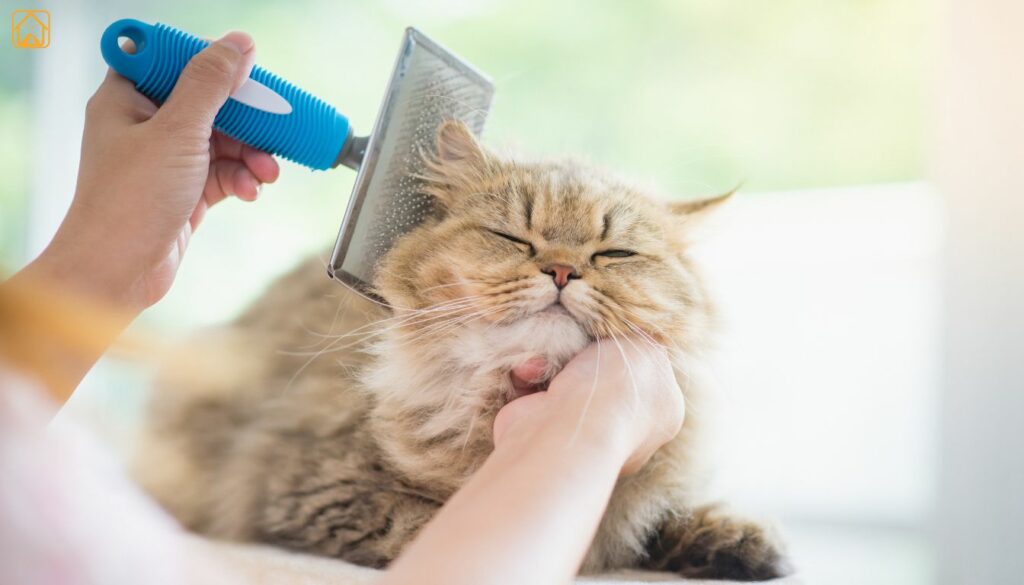
Let’s get real: That beautiful fur tangles, mats, and collects dust if left alone. Daily brushing is a must. I can’t count the times I’ve pulled a whole hairball from behind a Persian’s ear! Here’s what you need to know:
Daily Grooming Checklist
- Use a wide-tooth comb and slicker brush to work through every layer, focusing on trouble spots (behind ears, underarms, and belly).
- Wipe the face gently, tear staining is common, especially in white and light-colored Persians.
- Check for mats and tangles daily. If you find a knot, gently tease it out with your fingers or a detangling spray.
- Bathe your Persian every 4-6 weeks (or as needed) to keep the coat clean and shiny.
Regular grooming keeps your cat comfortable and prevents skin issues. It’s also a sweet way to bond. Some days, my Persian would roll onto her back and purr while I brushed her, like a mini spa day! For a step-by-step guide, check out trusted sources like Cornell Feline Health Center.
Common Health Considerations Related to Coat and Color
Persian cats’ stunning coats come with some special health considerations. Their long fur is prone to matting, which can lead to skin irritation. Tear staining around the eyes is common, especially in white Persians, and may need daily cleaning.
Some coat colors, like white, can be linked to higher odds of deafness, especially in blue-eyed cats. Brachycephalic (flat-faced) Persians may also need extra help with grooming and tear care. If you ever spot skin rashes or bald patches, talk to your vet right away.
FAQs About Persian Cat Colors, Coats, and Care
What are the most common Persian cat colors?
The most common Persian cat colors are white, black, blue (gray), cream, red (orange), and tabby patterns. White and blue Persians are especially popular, but the breed comes in dozens of recognized shades and combinations.
Why do some Persian cats have different color eyes?
It’s not unusual for white Persians to have “odd eyes” (one blue, one copper). This happens due to genetics influencing eye pigmentation. Odd-eyed Persians are healthy, though blue-eyed whites may have a higher risk of deafness in one or both ears.
What’s the difference between Persian cat coat types?
Most Persians have a long, double-layered coat: a soft undercoat and a longer, silky outer layer. Some variations exist, with certain lines bred for fuller or finer fur, but all require regular grooming to prevent mats and tangles.
How do I care for my Persian cat’s coat?
Brush your Persian daily using a wide-tooth comb and slicker brush. Pay extra attention to common matting areas. Regular bathing (every 4-6 weeks), facial cleaning, and professional grooming help keep their coat healthy and beautiful.
Are certain Persian cat colors linked to health problems?
Some coat colors, like white (especially with blue eyes), are more prone to congenital deafness. All Persians need careful grooming to prevent skin issues, and flat-faced types may need more help with tear staining and face cleaning.
What are “chinchilla” and “smoke” Persian cats?
Chinchilla Persians have a white or silver base with dark-tipped hairs, giving them a sparkling look. Smoke Persians have a pale undercoat and darker outer hair, creating a dramatic, smoky effect. Both are considered unique and rare.
How do breeders predict Persian cat coat colors?
Breeders use knowledge of genetics and color charts to estimate kitten colors. Some traits, like solid or tabby, are easier to predict, while rare colors depend on both parents carrying specific genes. Even then, nature sometimes surprises everyone!
Conclusion
The most unforgettable Persian I ever had wasn’t the white or black. He was just pure love wrapped in fur, always making me laugh with his silly quirks. So yes, admire all those stunning Persian cat color types, but when it comes to choosing, let your heart decide.
